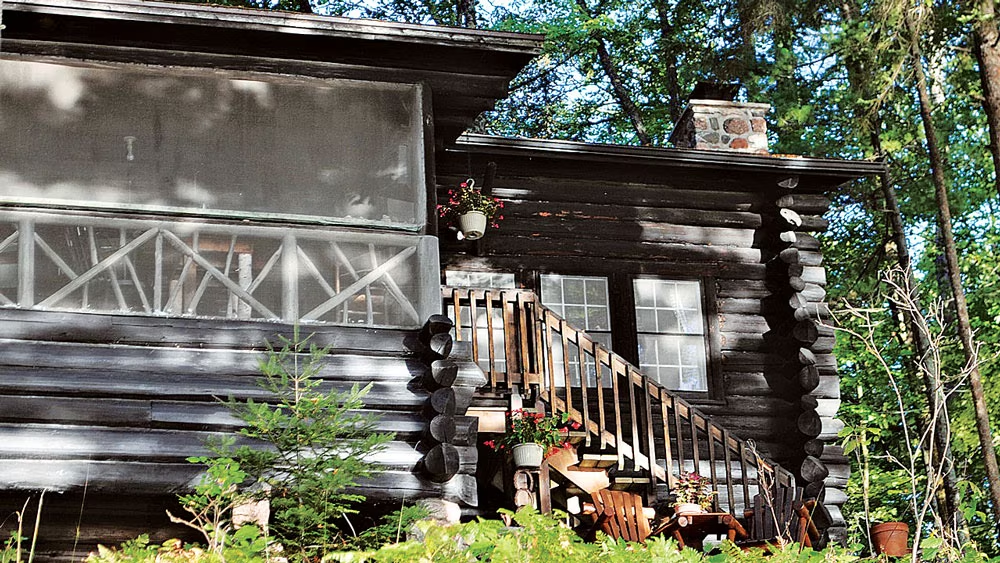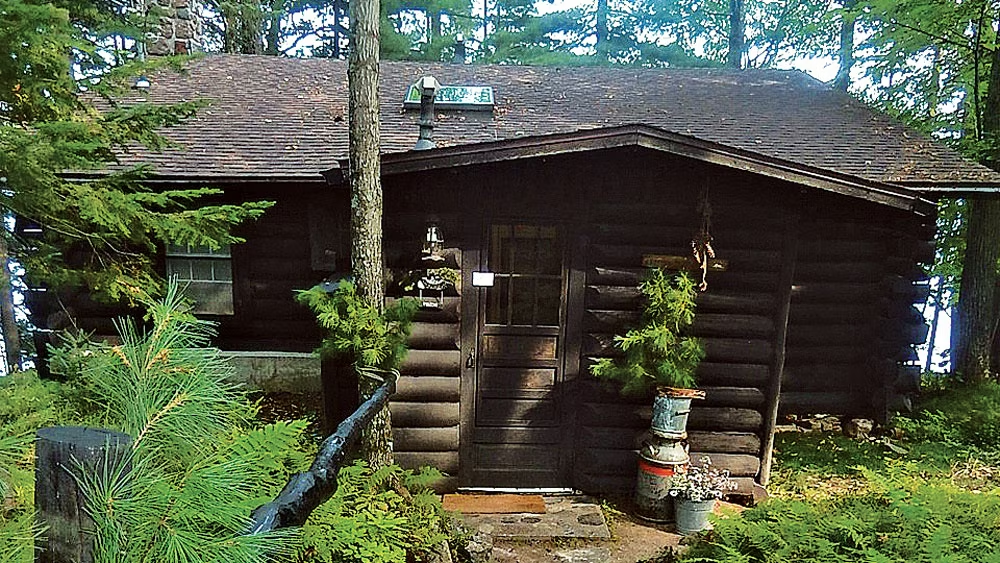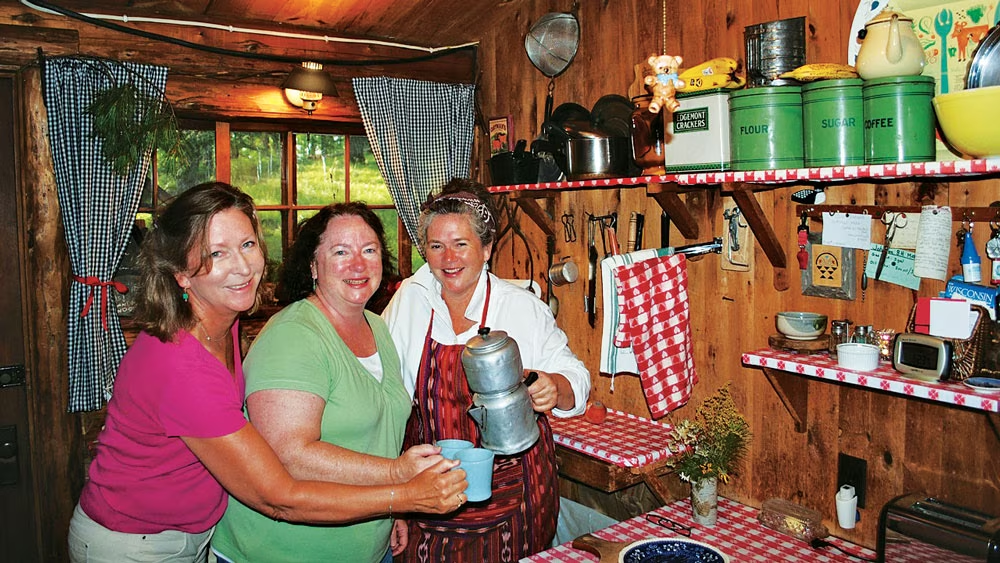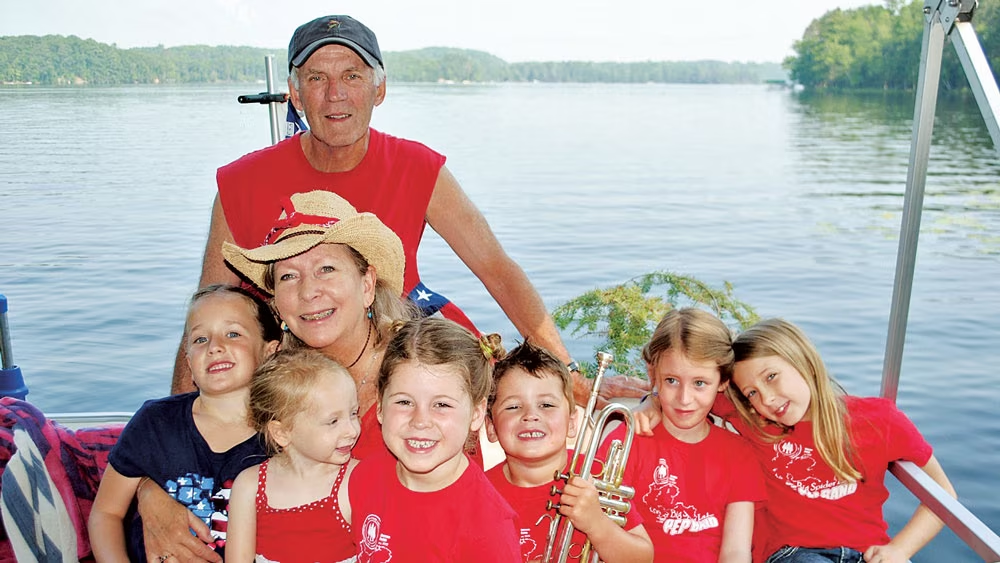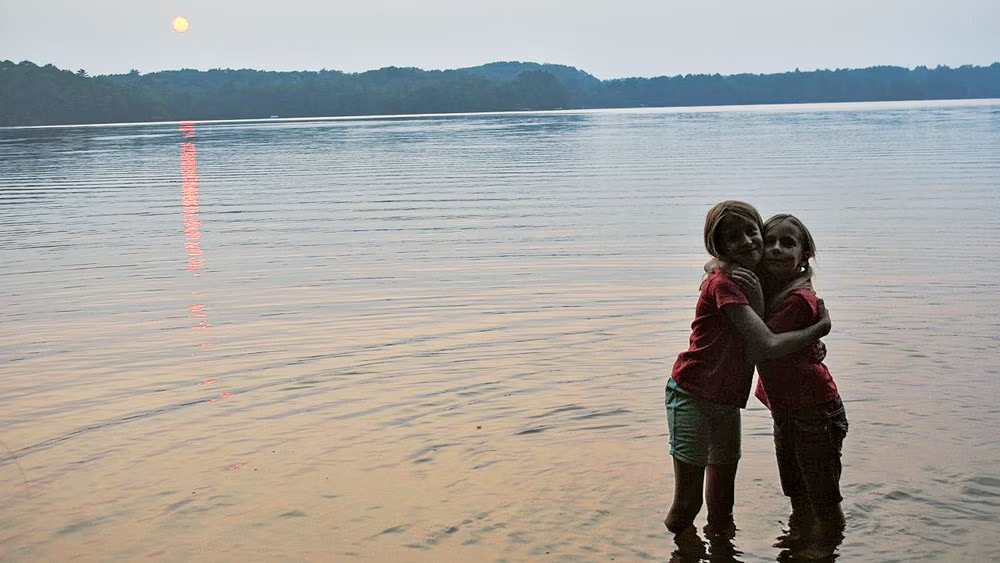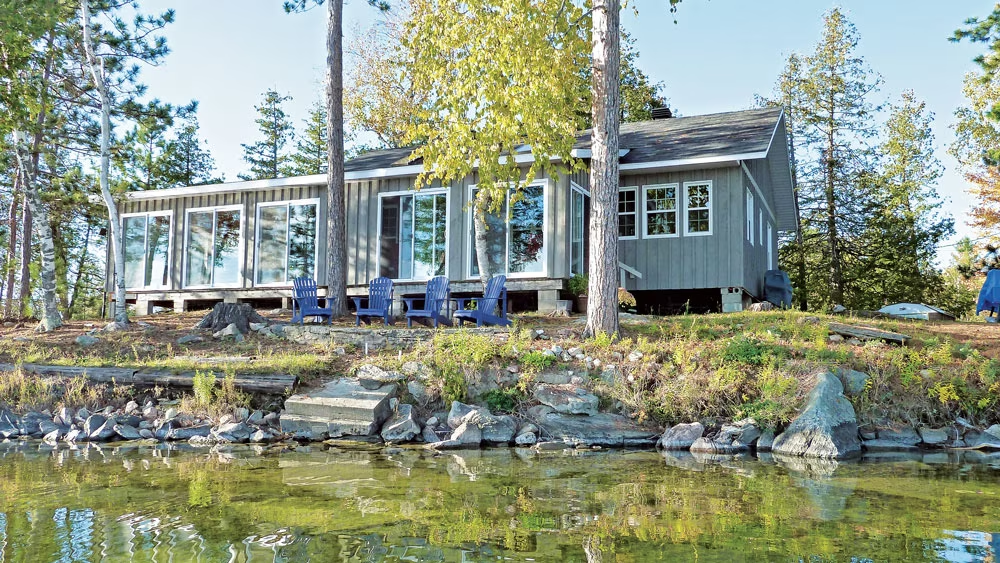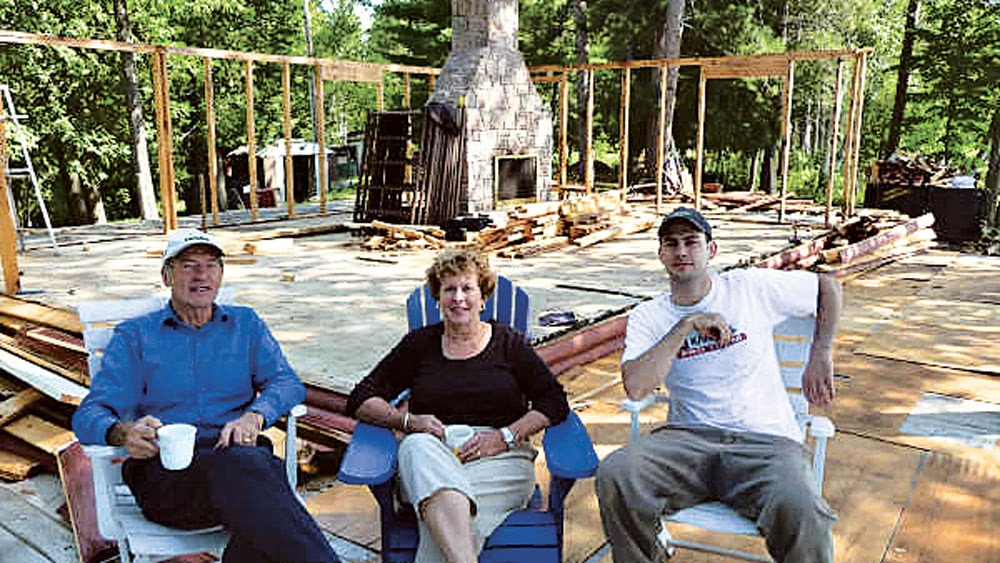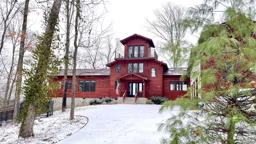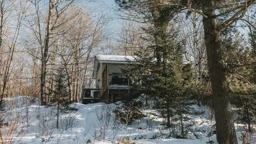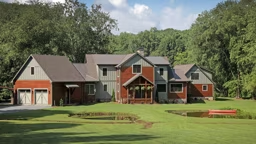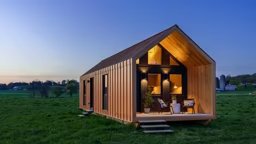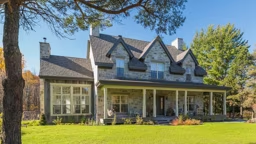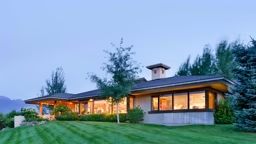Photos Courtesy of Cabin Owners Listed
1. Searching for an Established Lake Cabin

 Northwestern Minnesota farmer Loren Zutz and his wife, Deb, spent many summer vacations in rental cabins in northern Minnesota. When they tired of renting and decided they wanted to buy a place of their own, they searched 10 years for cabins and lake communities they liked. Loren said, “My accountant told me to buy something at least two hours away from our farm. He said, ‘If it’s only an hour away, you’ll come home early to combine or something.’ That was good advice.”
Northwestern Minnesota farmer Loren Zutz and his wife, Deb, spent many summer vacations in rental cabins in northern Minnesota. When they tired of renting and decided they wanted to buy a place of their own, they searched 10 years for cabins and lake communities they liked. Loren said, “My accountant told me to buy something at least two hours away from our farm. He said, ‘If it’s only an hour away, you’ll come home early to combine or something.’ That was good advice.”
The Zutzes liked the Bemidji, Minn., area. While vacationing at Rutgers Resort there, they noticed a cabin for sale on the west side of the lake. “We looked at it and told the seller, ‘We’re just poor dumb farmers. It’s more than we can afford.’”
The next summer, the cabin was still for sale. The Zutzes asked if they could rent it. “We showed up all set to rent, and the guy said, ‘I’ve decided not to rent it … But I’m gonna sell it to you today at a price you can afford.’”
Avid snowmobilers (Loren once finished the Winnipeg to St. Paul I-500 snowmobile race 90 seconds out of first place), the Zutzes enjoy winter at their cabin. “It can be a howling blizzard out at the farm,” says Loren. “In Bemidji, it’s a nice peaceful snow.” The Zutzes, who have three daughters and one son-in-law, now hold their family Christmas gatherings at the cabin. “Bemidji is such a beautiful area,” says Loren. “There’s so much to do here now. Even a rodeo.”
2. Building a Mountain Cabin

 Several years after moving from Indiana to Colorado in 1977, Frank and Linda Sullivan received a mailer offering free food and weekend lodging as a builder’s bribe to look at lots for sale in Red Feather Lakes, 50 miles from their new home in Ft. Collins, Colo. As lifelong Midwest flatlanders, they were intrigued by the snow-capped mountains and their new environment. “Anyway, it was a free weekend up there,” said Frank.
Several years after moving from Indiana to Colorado in 1977, Frank and Linda Sullivan received a mailer offering free food and weekend lodging as a builder’s bribe to look at lots for sale in Red Feather Lakes, 50 miles from their new home in Ft. Collins, Colo. As lifelong Midwest flatlanders, they were intrigued by the snow-capped mountains and their new environment. “Anyway, it was a free weekend up there,” said Frank.
When the Sullivans went into the mountains for the free weekend and to look at building lots 8,600 feet above the plains below, Frank asked about building a cabin at a lower elevation, and 20 miles closer to his home. The builder told him that if he built down there, each morning he’d have to turn over every board looking for rattlesnakes. At 8,600 feet, he wouldn’t have to worry about snakes. “Too cold,” says the builder.
In the 35 years since the Sullivans have owned their cabin at Red Feather Lakes, they’ve not seen snakes, but they have enjoyed watching bear, moose, bobcats, lynx, deer, elk and cougars. The Sullivans’ small cabin was basically built in a day. Frank finished the interior himself. “We didn’t have any electricity for six years, no neighbors for 10,” Frank recalls. “We witched for water and got it at 20 feet. Unsafe to drink, though. We had to drill through 500 feet of unfractured rock at $32 a foot to hit good water.”
Landscaping efforts also proved to be difficult. “It was open-range (grazing) up there then,” Frank says. “I tried to grow some trees and bushes around the cabin. Cattle came through and ate it all.” Frank and Linda thought about enlarging the cabin as their family grew. Now their adult children tell them they like the cozy little cabin just the way it is. The kids and grandkids like to fish and hike, watch the animals, and listen to the resident cougar growl. “Sometimes, we even see it,” says Frank.
3. Preserving a Historic Cabin
Marnie Mamminga, her husband Dave, plus Mamminga’s three siblings, own a three-season rustic cabin on a chain of lakes near Hayward, Wis. In 1929, Mamminga’s grandfather, Erle Oatman, built the cabin of field stones and hand-hewn tamarack logs. Mamminga, author of “Return to Wake Robin, One cabin in the Heyday of Northwoods Resorts,” describes her grandparents’ cabin as, “two bedrooms, a screened porch and a one-butt kitchen.”
Her grandfather named the cabin “Wake Robin” after the wildflower trillium of that name that thrives in the surrounding woods. Except for a telephone added in the 1980s, Wake Robin is unchanged. Five generations of Mamminga’s family now enjoy the cabin. “It’s a place where the fourth generation, in their 30s now, can get off the grid and relax. There’s no TV, no A/C, no Internet. I love the simplicity. Just as my grandfather did.” Marnie has never missed a summer at Wake Robin. “All of my (66) birthdays have been celebrated there. It’s such a gathering place to connect with nature. When my brother got married out on the dock, we had 25 families.”
With so many family members using Wake Robin, it can become crowded. Scheduling is required. Marnie and David built a winterized modern cabin across the lake and plan to retire there. “It’s only a five-minute boat ride across the lake to Wake Robin,” said Marnie. And 87 years into the past.
4. It’s Always Been a Magnet

Bruce Smithson was 16 years old when he first saw the point of land on Lake Norway, about an hour west of Ottawa, Canada, where his father would build a cottage. He would rebuild it years later. “The pull of the place has always been there for me,” he said. “It’s always been a magnet.”
On that long ago summer vacation when Smithson was 16, his father Bart noticed a vacant section of lakefront on Lake Norway. Says Bruce, “Mom and Dad had decided they could afford $500 for a lake lot to build a cabin.” Bart found the owner, who said he’d been thinking about selling some of his 100x100-foot lakefront lots for $100 each. Bruce recalls: “Dad said, ‘That one right on the point. That’s a nice lot. How much for that?’ The seller agreed yes, was a nice lot. He’d have to get $150 for it. Dad said, ‘OK, I’ll take four lots.’ ”
Bart and his wife, Jennie, built a typical ’50s lake cabin. “It was dull and small,” says Bruce. “After Kate and I married, we didn’t spend a lot of time there while it was still Mom and Dad’s.” For 23 years, the Smithsons owned a large home in suburban Ottawa, where they raised their children, Jeff and Lauren. Bruce had worked his way through college building houses, so after the family cabin passed to him, he set to work rebuilding the dull and dreary old cabin.
Today, nine double sliding-glass doors offer stunning views of the lake and bay. Bruce and Kate have worked in education and traveled around the world. Retired, they now spend their summers at the cabin and their winters in Venice, Fla. Says Bruce, “My thoughts, my outlook and values have always been with the cottage, the family gathering place. I would sell everything else before the cottage.”



